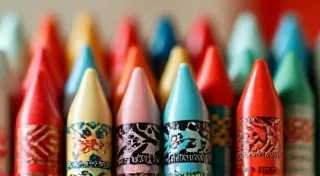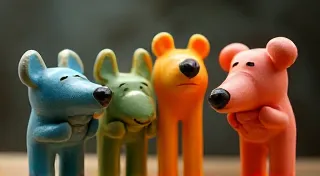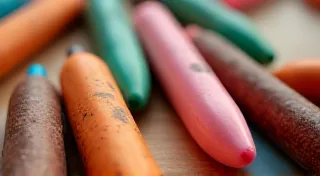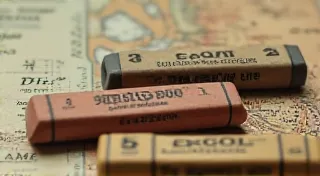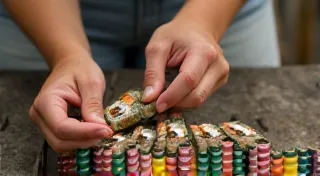Manufacturer Spotlight: Blick & Diehl Erasers
Welcome back to Collecting Vintage Pencil Erasers! Today, we’re diving deep into the fascinating history of a significant manufacturer in the world of collectible stationery: Blick & Diehl. While perhaps not as instantly recognizable as some other brands, Blick & Diehl produced a remarkable range of pencil erasers spanning much of the 20th century, and their erasers are increasingly sought after by collectors. This article will explore their production, styles, and variations, offering insights for both novice and experienced collectors.
The History of Blick & Diehl
Blick & Diehl’s origins trace back to the late 19th century. Founded in 1886 in Newark, New Jersey, the company initially specialized in manufacturing office supplies, particularly envelopes and paper products. The name comes from the founders, Frederick Blick and Henry Diehl. Their early success was built on supplying high-quality stationery goods to businesses and retailers. As the popularity of pencil erasers grew in the early 1900s, Blick & Diehl recognized the opportunity and expanded their product line to include these essential writing tools. They quickly established a reputation for reliable production and a wide variety of designs.
Throughout the 20th century, Blick & Diehl grew into a substantial enterprise, supplying stationery items across the United States. While they continued to manufacture envelopes and paper, pencil erasers became a core part of their business. The company navigated periods of economic fluctuation and changing consumer preferences, adapting their production methods and designs accordingly. The appeal of these erasers, particularly the whimsical and often character-driven designs, helped to define a whole generation of school supplies. Eventually, Blick & Diehl was acquired by another stationery supplier, and their brand presence gradually diminished, leaving behind a legacy of collectible pencil erasers.
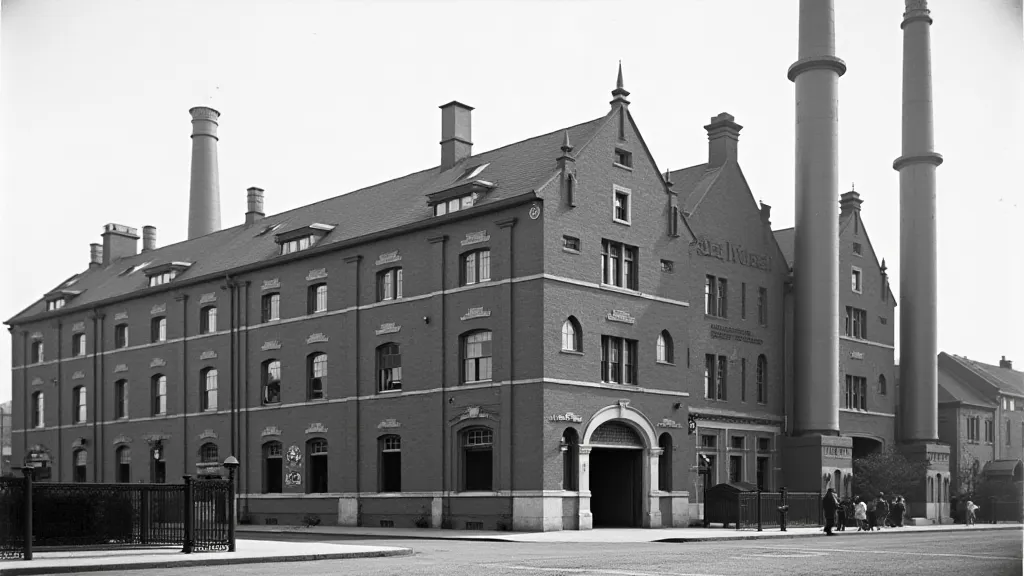
Early Blick & Diehl Eraser Styles
Early Blick & Diehl erasers were typically made from crumb rubber, often encased in cardboard or paper sheaths. These were functional, budget-friendly erasers intended for everyday use. The exterior of these early erasers often featured simple branding – the “Blick & Diehl” name in basic fonts, sometimes accompanied by the company's logo. The logo itself was often a stylized depiction of a quill and inkwell, symbolizing the writing and stationery industry.
Around the 1920s and 1930s, Blick & Diehl began to experiment with different materials and designs. They introduced celluloid erasers, offering a smoother and more durable surface. Celluloid allowed for more elaborate designs and color options than the traditional crumb rubber casings. These celluloid erasers often featured embossed patterns – stripes, dots, or geometric shapes – and were available in a wider range of colors, including pale pinks, blues, yellows, and greens. The evolution of eraser shapes themselves, from simple rectangles to the more elaborate forms we see today, is a story of innovation in stationery design – a journey that Blick & Diehl contributed to significantly.
The Rise of Novelty Erasers
The mid-20th century (1940s-1960s) witnessed a boom in novelty pencil erasers. Blick & Diehl was a major player in this trend. They produced erasers shaped like animals (cats, dogs, birds), cartoon characters, vehicles (cars, airplanes), and other whimsical figures. These novelty erasers were often made from vinyl or rubber, with vibrant colors and playful designs intended to appeal to children. Collecting these playful items represents a unique corner of the vintage eraser market, offering a colorful window into mid-century pop culture. For enthusiasts keen to explore this niche, a look at collecting novelty erasers, encompassing clowns, characters and cartoon designs, can provide a broader understanding of the era.
The quality of the rubber used in these novelty erasers varied considerably. Some were quite effective at erasing, while others were more ornamental than functional. This variation in quality can be a key factor in determining the value of a particular eraser today.
Celluloid Variations and Colors
As mentioned earlier, celluloid was a key material for Blick & Diehl. Collectors often focus on the color variations within the celluloid eraser range. Early celluloid erasers were often translucent or semi-opaque, allowing some of the underlying crumb rubber to show through. As manufacturing techniques improved, Blick & Diehl began to produce fully opaque celluloid erasers in a wider range of colors.
Certain colors are rarer than others and command higher prices. Bright reds, deep blues, and specific shades of pink are particularly sought after. Furthermore, variations in the thickness of the celluloid casing and the type of printing used on the surface can influence a collector’s interest.
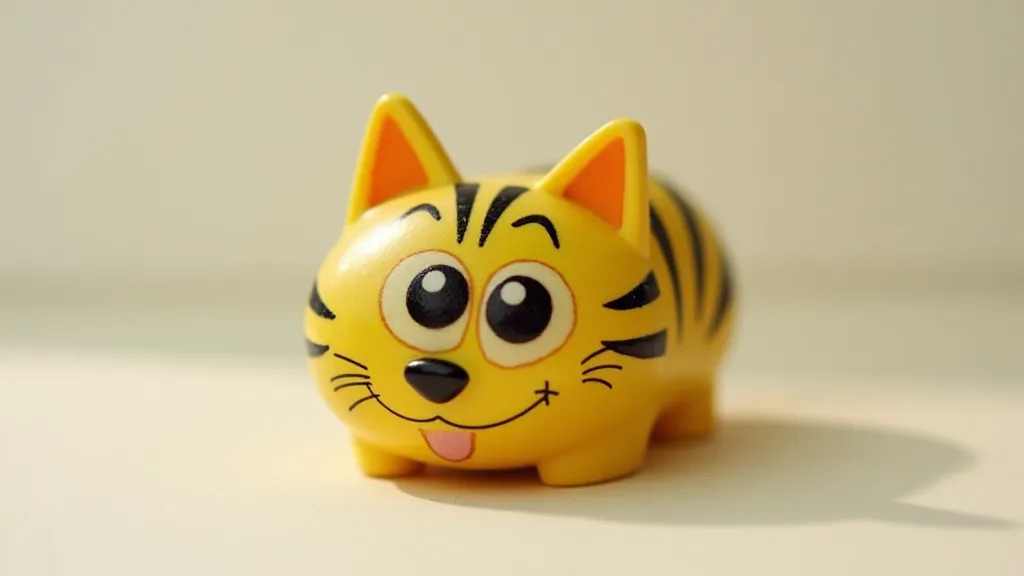
Identifying Blick & Diehl Erasers
Identifying Blick & Diehl erasers can sometimes be tricky. The company’s branding was not always prominent, especially on early models. Look for the "Blick & Diehl" name, either printed or embossed, on the eraser’s surface or on the paper/cardboard sheath. The quill and inkwell logo is another key identifier.
The style of lettering and the overall design aesthetic can also provide clues. Early Blick & Diehl erasers typically feature a more formal and traditional font, while later models may incorporate more modern and playful typography.
The material of the eraser itself is another important factor. Celluloid erasers are generally more durable and visually appealing than crumb rubber erasers. If the eraser is encased in a paper or cardboard sheath, examine the printing and design of the sheath for identifying marks.
Value and Collecting Tips
The value of Blick & Diehl erasers varies significantly depending on several factors: rarity, condition, material, design, and color. Novelty erasers, especially those in excellent condition and featuring desirable characters or designs, are generally the most valuable.
Celluloid erasers in rare colors (like bright red or deep blue) can also command high prices. Erasers in their original paper or cardboard sheaths are always more valuable than those that are loose. The diverse range of animal-themed erasers produced by Blick & Diehl adds another layer of collectibility, highlighting the company’s embrace of playful design. For those drawn to this charming category, animal erasers represent a delightful and accessible entry point into the world of vintage stationery collecting.
Here are a few tips for collecting Blick & Diehl erasers:
- Research: Learn as much as you can about the company and its products.
- Condition is Key: Prioritize erasers in excellent condition.
- Specialize: Focus on a particular style or type of eraser (e.g., novelty erasers, celluloid erasers).
- Network: Connect with other collectors to share information and acquire new items.
- Consider a Starter Collection: New collectors might find guidance and inspiration in building a starter collection of essential vintage erasers.
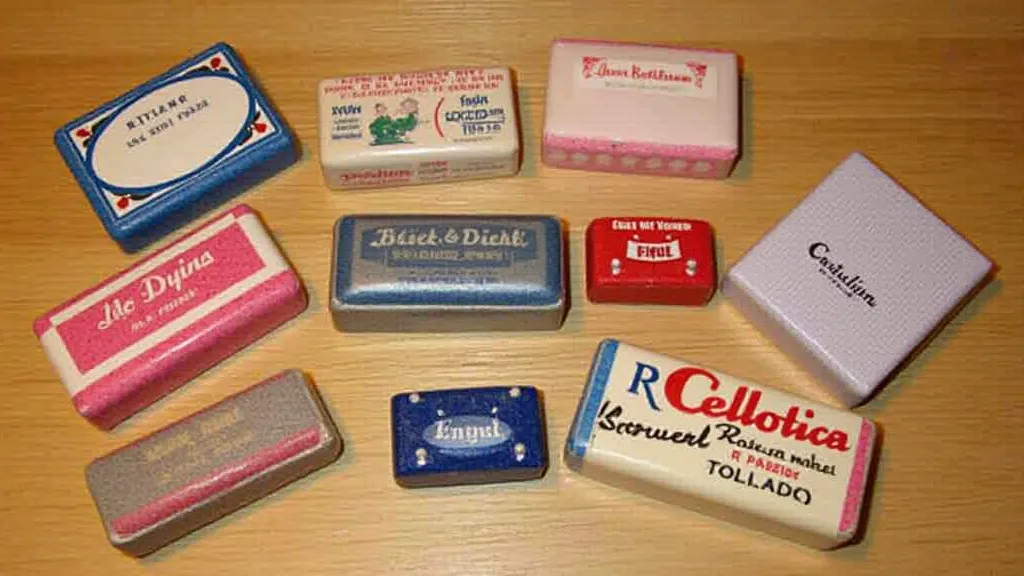
The Evolution of Design and Materials
Blick & Diehl’s approach to eraser design went hand-in-hand with the broader trends in stationery manufacturing. As the 20th century progressed, mass production techniques allowed for greater experimentation with shapes and colors. Early erasers, as previously mentioned, prioritized functionality over aesthetics. But as consumer tastes evolved, so too did the emphasis on visual appeal. The company’s ability to adapt to these shifts, embracing new materials and design concepts, directly contributed to its longevity and appeal to collectors today. The company’s journey illustrates a key principle in collecting – understanding the historical context of an object significantly enhances its appreciation and perceived value.
Conclusion
Blick & Diehl played a significant role in the history of collectible stationery. Their pencil erasers represent a fascinating blend of functionality and design, reflecting the changing tastes and trends of the 20th century. Whether you are a seasoned collector or just starting out, exploring the world of Blick & Diehl erasers is sure to be a rewarding experience.

